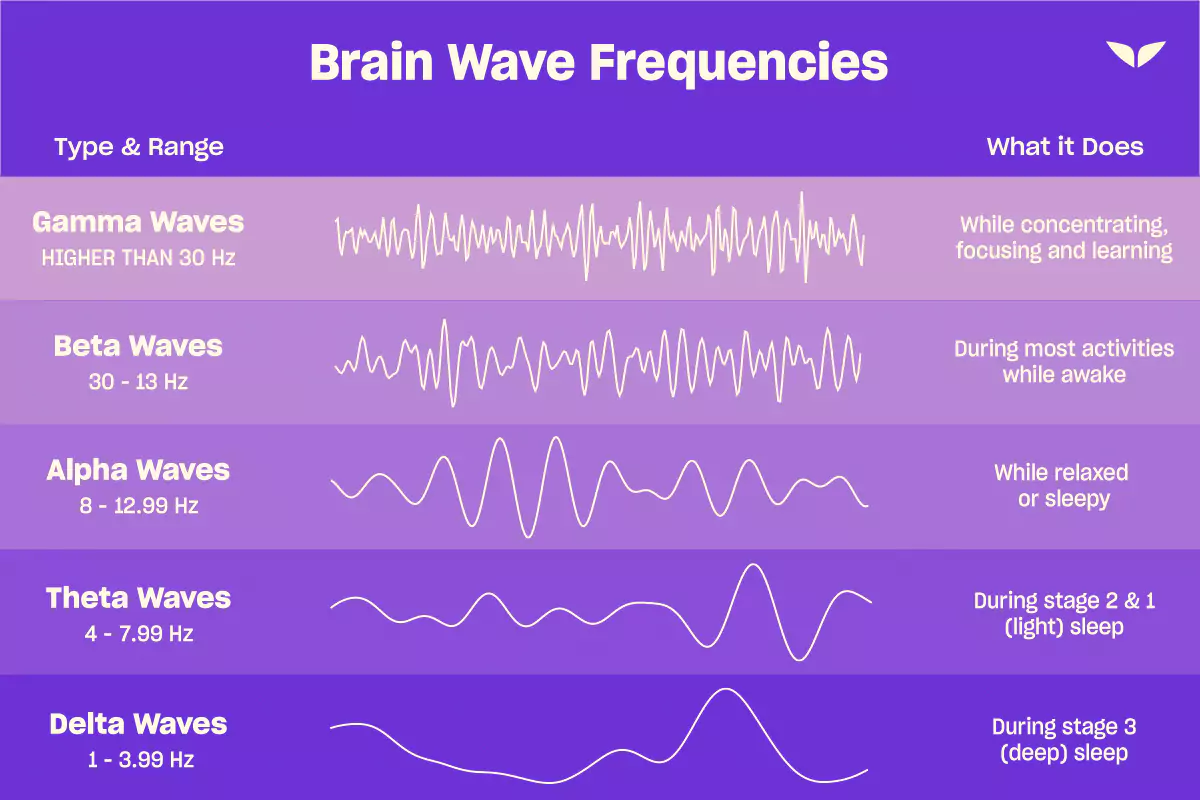Swinging pocket watches, clucking like a chicken, swirling eyes like in the cartoons, and other pop-culture clichés. All are examples of hypnosis’ long and checkered past, especially in entertainment.
The ever-lingering question is, though, “Is hypnosis real?“ There are some who believe it’s a bunch of malarkey (that can happen when someone’s “turned into a chicken”), but there are many who believe otherwise.
“Hypnosis is a phenomenal technology for helping people to get calm, to turn off the fear and the anxiety, and turn on the peace and the calm,” says Paul McKenna, a hypnotist and behavioral scientist. He also happens to be the trainer for Mindvalley’s Everday Bliss Quest and the Mindvalley Certified Hypnotherapist program.
This type of therapy is both a skill and a real science. It’s tied to how our brain works and how we think, both on the surface and deep down.
And by learning more about it, you can understand what’s real and what’s just a myth.
Is hypnosis real?
Getting down to the nitty-gritty—yes, hypnosis is real. It’s used as a legitimate form of alternative therapy for a variety of health conditions, like pain, stress, trauma, and even quitting smoking.
But what about from a scientific viewpoint? Is hypnosis a real thing? It seems that it’s still a resounding “yes.”
As one study found, certain parts of the brain act differently during hypnosis. This means the practice isn’t just a feeling or idea; it actually changes how the brain works.
Another study from the Stanford University School of Medicine uncovered that people in hypnosis trance had changes in brain areas linked to focus and attention. And it’s these areas that also affect how the body responds.
The reality of life nowadays is that “everybody has some stress, but hardly anyone has the skills to deal with it,” according to Paul. Hypnosis, he further explains, can help.
What is hypnosis?
It’s like going into a deep focus—that’s simply how to describe hypnosis. In this state, you pay more attention to your inner feelings and thoughts than to what’s happening around you.
Now, you may have heard several terms thrown around—hypnosis, hypnotic, hypnotize, among others. What do they all mean?
Merriam-Webster has the answers:
- Hypnosis (n.)
A trance-like state that resembles sleep but is induced by a person whose suggestions are readily accepted by the subject.
- Hypnotherapy (n.)
Psychotherapy that facilitates suggestion, re-education, or analysis by hypnosis.
- Hypnotic (adj.)
Tending to produce sleep: of or relating to hypnosis.
- Hypnotize (v.)
1) To induce hypnosis in; or 2) to dazzle or overcome by or as if by suggestion.
- Hypnotism (n.)
The study or act of inducing hypnosis
But these hypnosis definitions fail to mention that you don’t need a hypnotherapist to enter a state of hypnosis; actually, you enter hypnosis all the time.
For example, when you’re engrossed in a novel or when you’re lost in thought. These are the moments that mirror the hypnotic state.
Is hypnosis dangerous?
Overall, the practice of hypnosis is safe. However, there are several reasons to keep in mind when opting for this kind of therapy:
- The practitioner is not qualified. They might not help or even make things worse.
- You have unrealistic expectations. Everyone’s response to hypnosis varies. Not everyone will see immediate results, so manage your expectations.
- Potential for false memories. Rarely, hypnosis can cause made-up memories. But with experts like Paul, this risk is minimal.
- Going back to hurtful memories can be hard. However, confronting these memories might intensify the pain before leading to healing.
With hypnosis, according to Paul, you can “reprogram the unconscious mind, and you do that through visualization; you do it through the power of suggestion.”
However, like any other kind of therapy, it’s always highly recommended to be cautious and have a trained therapist conduct the sessions.
Are there different types of hypnosis?
One common misconception is that hypnosis is just that—going into a trance-like state. However, what surprises people is that there are several types of it. Here are a few popular ones:
- Self-hypnosis is when you put yourself in a deeply focused state, unguided, and become more open to suggestions.
- Thought Field Therapy (TFT) combines modern science with the principles of acupuncture. Created by Professor Roger Callahan, it involves tapping specific body points to quickly and predictably influence feelings.
- The Havening Technique uses touch patterns, eye movements, and visualizations to produce calming brain waves. Created by Paul himself, it offers relief from unhappiness, anxiety, and trauma by altering the brain’s response to stress.
- The Big Technique blends Zen Buddhism with Western thinking, helping you explore and understand different sides of yourself.
- Rapid Transformational Therapy (RTT®) was created by hypnotherapist trainer Marisa Peer, who’s also the trainer of Mindvalley’s Rapid Transformational Hypnotherapy for Abundance Quest. It teaches you to communicate with your subconscious mind in order to address the root cause of your issues.
Not sure which one’s for you? Try the different types of hypnosis to find out which suits you best.
Learn more: Is hypnosis for sleep effective? Here’s how it can help you
People need the power of hypnotherapy to help them make amazing changes, to get confident, to get motivated, get optimistic. — @ImPaulMcKenna Share on XWhen do we experience hypnosis?
Hypnosis happens between normal waking consciousness and sleep. And so we typically slip into this state two times a day:
- Right before we wake up and
- At night as we fall asleep.
You’ve likely been aware of it before: those pulsating shapes and colors that form behind your eyelids as you fade away from normal waking consciousness…
The visual haze that slowly morphs into defined objects, people, and landscapes…
The way your thoughts begin speaking a language of sounds, images, smells, emotions, and feelings…
Sound familiar?
Well, how about when you get completely “zoned out” while driving home from work that you don’t even remember the details of the drive? Or when you space out completely, get lost in a daydream, and stare wide-eyed at nothing?
These are all states of hypnosis.
What makes hypnosis real is when our conscious and subconscious minds seemingly vibrate at once. We become so focused on our inner world that the outer world temporarily ceases to exist.
The thing is, we often don’t recognize it when it happens. Because of this, we have no control over how long we stay in hypnosis or how deep we go. And we rarely influence or direct the experience as it becomes more dreamlike.
How does hypnosis work?
The magic of hypnosis is that it lowers our brain waves from the beta frequency to alpha and theta—between the conscious and unconscious. And it’s within the latter brain waves that the subconscious mind is expressed through emotion and vivid imagery.
Let’s take a step back for a minute and look at the states of consciousness through brain waves. Scientists use EEG (electroencephalography) to measure them, which are categorized into five groups based on frequency (from highest to lowest):
- Gamma (above 40 Hz): The Insight Wave
- Beta (14–40 Hz): The Waking Consciousness and Reason Wave
- Alpha (7.5–14 Hz): The Deep Relaxation Wave
- Theta (4–7.5 Hz): The Meditation and Sleeping Wave
- Delta (0.5–4 Hz): The Deep Sleep Wave

Higher frequencies are associated with high-intensity alertness, while lower frequencies are associated with relaxation.
When we’re in waking consciousness, our brains are typically functioning at the beta frequency. And deep sleep is when our brain waves are all the way in delta.
So where exactly is the stage of hypnosis? Somewhere in between the two.
Does hypnosis work?
Can people really be hypnotized? The short answer is yes. When your subconscious mind is open, focused, and highly suggestive, this practice can help you rewire your dysfunctional habits.
And there are plenty of people who can vouch for its effectiveness.
For example, Ian Spare, a business owner and Mindvalley Member, had his doubts. But now he’s used the “I Can Make You Sleep” meditation to help with his insomnia.
“It had a significant impact on being able to still my mind and go to a better place in my head,” he says. “I enjoy longer and more refreshing sleep, which in turn helps me deal with my stressful job.”
And for another Mindvalley Member, Kath Ryan, who was dealing with life-threatening health issues, hypnosis helped remove the fear and anxiety she was experiencing. What’s more, it gave her “peace of mind and the ability to enjoy each day again.”
This practice has transformed lives in many ways. And when you approach it with an open mind, it may just offer you the genuine change and healing you need.

How is hypnosis performed?
There are a number of ways to perform hypnotism, which is the act of inducing hypnosis. The most commonly used one is when someone goes into a trance.
But it’s more than just a mysterious trance. As Paul explains in the webinar for the Mindvalley Certified Hypnotherapist program, “hypnotists use a special language; they use their style and communication to ‘influence’ people.”
And this happens in a structured process with four key stages:
1. Getting started
This stage sets the groundwork for the entire hypnosis process. It’s when you center yourself and shed the weight of everyday thoughts and distractions.
Techniques can vary, such as:
- Following a specific breathing rhythm,
- Deliberately tensing and then relaxing different muscle groups, or
- Immersing oneself in the visualization of a serene and peaceful scene.
The primary goal is to lead you into a state of deep relaxation and heightened concentration. And this is to prepare your mind for the next stages of hypnosis.
2. Going deeper
This stage takes the relaxation deeper. Here, your hypnotherapist employs guided imagery techniques to enhance your experience.
For instance, you might be asked to imagine walking down a serene staircase or gently sinking into a soft, comforting cloud. This can help sharpen your focus, making sure you’re fully engaged in the hypnotic process.
3. Making changes
Now, the real work begins. This stage targets your needs, whatever they may be, like quitting smoking or overcoming anxiety. And your therapist might guide you through visual scenarios.
Let’s say you’re trying to quit smoking. So you might visualize two versions of yourself: one struggling with the habit and another healthier, happier non-smoker.
This stage harnesses the power of suggestion to reshape your behaviors and perceptions.
4. Coming back
Remember that staircase or soft cloud in the second stage? Now imagine emerging from them.
That’s what happens in this phase: it brings you back to your usual conscious state. Now, you’re ready to take on the world with new insights and behaviors.
Is hypnosis real on stage?
Stage hypnosis may conjure up images of people clucking like chickens. However, when genuine hypnotists conduct it (and not just for entertainment), they can demonstrate the real and powerful effects of hypnosis.
Keep in mind that this practice only works if the person is open to it. And what’s great about it is, it offers the audience a glimpse into the mind’s ability to respond to suggestions.
Here’s an instance where that can happen—hypnosis by Paul on stage at Mindvalley University 2022 in Tallinn, Estonia:
Your next trance-formation
“If you don’t take responsibility for programming yourself, then someone else will,” says Paul. And so, if you’re interested in learning how to use it to approach life with everyday bliss, then you can learn from Paul himself.
In the Mindvalley Certified Hypnotherapist program, you’ll be able to:
- Learn hypnotherapy to discover new personal talents.
- Your hypnotherapy work can make the world better.
- Turn your love for self-improvement into a job.
- Hypnotherapy is a job for the future, and you can shape that future.
- Design a life where you decide your schedule and find joy.
But you don’t have to dive headfirst; you can get a feel of what’s in store for the program when you join the Mindvalley Certified Hypnotherapist FREE webinar. And by the end of it, you’ll better understand the impact of hypnosis and how to use Paul’s quick methods to help yourself and others.
The thing is, hypnosis isn’t magic, but it sure can feel magical.
Welcome in.
—
Images generated on Midjourney.









